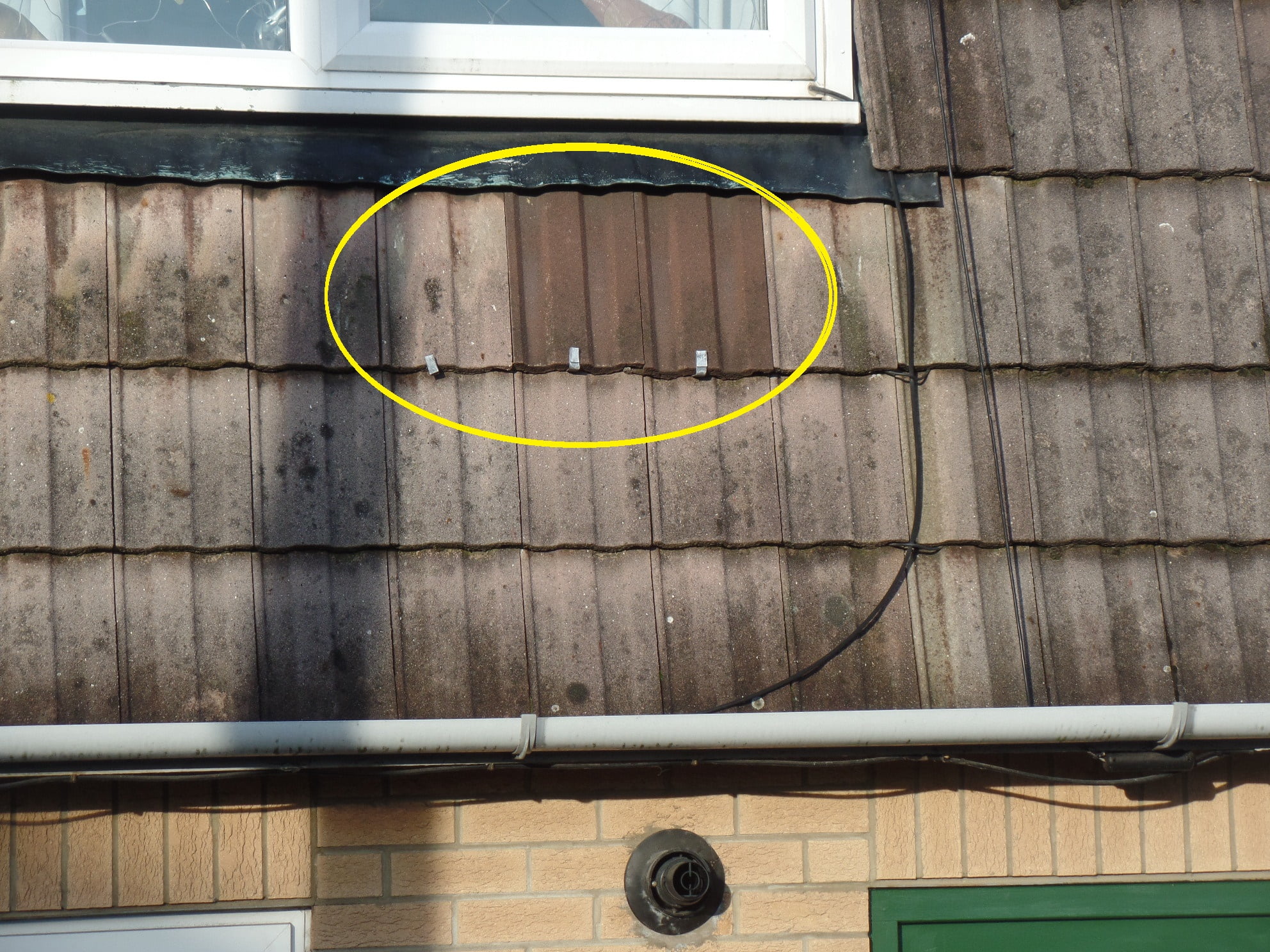How long does a roof last ??

Case Study – Clay Tiles
The background
Clay tiles have been used for roofing within the Bristol area for centuries, up to the 1950s. Most are pre WW11, so are at least 70 years old. The text books suggest a lifespan of around 40-60 years for clay tiles, before they become damaged or porous. And the tiles on most of the roofs we currently inspect are well in excess of this lifespan. Sometimes the roof has been repaired and the sarking felt renewed however the original tiles have been re-used.
We check the exterior condition of the roof with our pole cameras then inspect the condition of the sarking felt from inside the loft. This gives a good indication of when the felt was last changed. Black bitumen felt became unpopular in the 2000’s although it still in limited use today.
The property
We recently carried out a survey in the area of St. George, on a Victorian mid-terraced property with two bedrooms, the traditional “ 2 up, 2 down”. The house was generally in good order and the vendor was very open with us. Following our pole camera roof inspection and reviewing inside the loft, we noted that the roof was in a fairly poor state or repair. There were numerous localised patch repairs visible.
The paradox
We discussed this with the vendor who was surprised because she had spent so much money on the roof! She had owned the property for ten years and showed various receipts and invoices for repairs she has had carried out in that time. Replacing individual tiles and overhaul when first bought in 2008 cost £1500. Removal and replacement of 4 broken tiles in 2010 cost £80. Replacement of coping stones and render to parapet wall costing £800 in 2012. Repointing the ridge tiles at £500, with the works completed in 2015. An additional £995 to replace the bottom row of felt on the front elevation in 2017.
So, in summary in her ten year tenure, she has spent £3,875.00. That is £387.50 a year just to keep this roof going for the last 10 years. To keep this roof going for another ten years, around £1000 is required for rear felt repairs alone. So the total is £4875.00 already, with older felt still in place to the main roof.
Outcomes
When we inspected the roof, we could see daylight through the rear eaves. The older felt generally showed significant rips and tears. The repaired front eaves were showing light between the tiles where the felt had been stretched to help lap into the gutter during the repair in 2017. Hence we need to say to the prospective purchasers that the roof really requires replacement.
So the vendor obtained quotes. One builder estimated £5200 inc VAT this is a very competitive quote. This covers removing the old clay tiles and replacing them with concrete ones. The re-felting will be with a modern breathable membrane and a dry ridge system. The builder will give a ten year guarantee on the works as well. We queried whether the builder had included gaining Building Control approvals and the roof strengthening work required? A response is awaited.
Concrete tiles?
New concrete tiles should give a working life of some 60-80 years, although the jury is still out. One of our surveyors has his 1950’s concrete tile roof still in place and it is performing very well.
It is 68 years old with only minor pointing having been carried out. We will update this again in 10 years to let you know how his roof is getting on!
